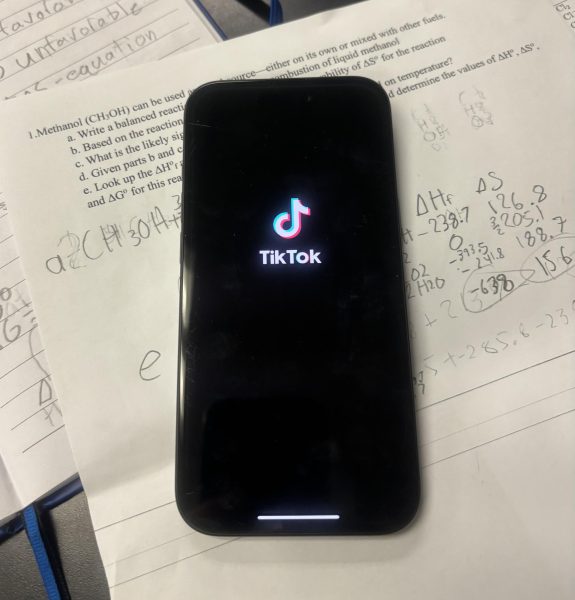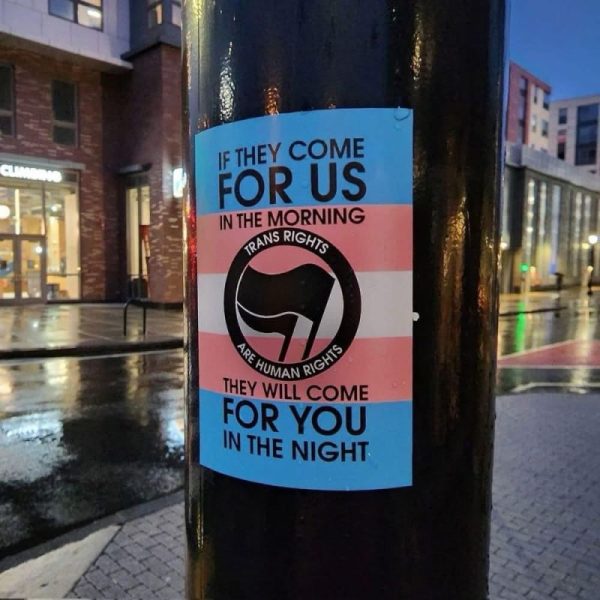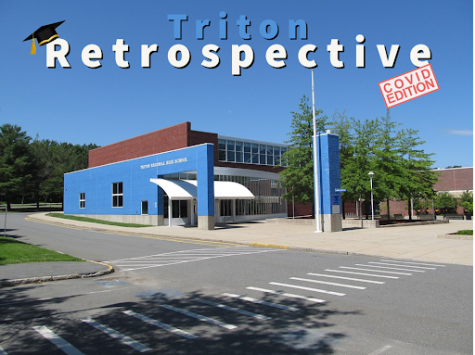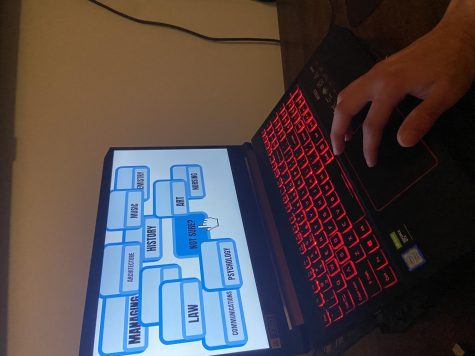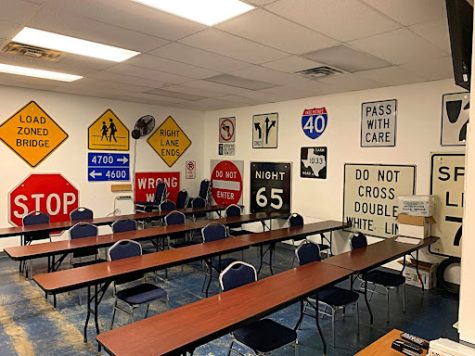“Turning Orange Into Blue”
The leadership team of student council shows off the new senior shirts at a recent pep rally.
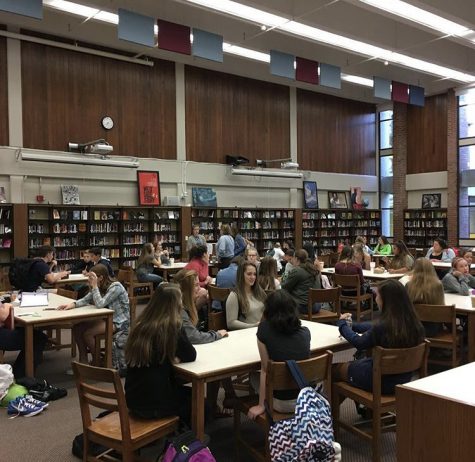
A 2017-2018 StuCo meeting.
“Why Triton?” was a slogan first devised by the school to promote the attitudes and merits of Triton to its surrounding communities. Through the years, however, the student body has transformed “Why Triton?” into a phrase with a negative connotation. When students hear “Why Triton?” around school, it’s oftentimes a sarcastic response to the leaking window panes, broken floor tiles, or missing ceiling panels.
Perhaps these negative comments are what first drove Student Council President Lily Fullford to create the Viking Day of Giving.
“It’s always been my goal to increase school spirit and this seemed like the perfect way to do it,” said Fulfold.
So, how is Student Council increasing Triton’s school spirit?
Over the course of two days, Friday, March 15th and Saturday, March 16th, Student Council and participating students, teachers, and other members of the Triton community will gather within the school to carry out an assortment of reconditioning projects.
“The focus of painting will be on that central office/main office hallway, just turning the orange [walls] into blue. . .we will have brag boards displaying student work, and hopefully we will have the photos up for pictures that will line the back side of the auditorium, the T’s, and the gym. These will be pictures of visual and performing arts. . .and sports teams,” explained Student Council adviser Ms. Beaulieu.
In addition to the projects mentioned by Beaulieu, Mrs. Davis and Mrs. Dempsey’s classrooms will be repainted, while Ms. Flaherty and Mr. Colbert’s doors will be decorated to resemble the covers of I Know Why the Caged Bird Sings and Slaughterhouse Five.
The event is split into three shifts: Friday, March 15th from 2:30 p.m. to 5:00 p.m., and Saturday, March 16th there are two shifts, one 8:00 a.m. to 11:30 a.m., and the other 12:30 p.m. to 4:00 p.m. On Saturday, there will be a breakfast provided by Aroma Joe’s in Salisbury. Lunch has been offered by an assortment of organizations, however the Student Council Executive Board has not yet decided on which one to use. As of March 6th, 50 student volunteers, 30 staff volunteers, and an assortment of community volunteers have said they will be attending the event.
“Originally as President I wanted the Student Council to have a big impact on the community, but I didn’t know how,” Fulford stated. “At first I wanted to look outside the school, community service wise, but after talking with Beaulieu, we realized it would be better to fix up the school before we try and help the community.”
“In the long scheme of things do I think the students will be like ‘Oh yeah, the school is so much better because it is our school colors!’ Probably not. I think that subconsciously for some, and consciously for others, there will be a thought of ‘Hey, this looks better, I’m going to treat it better,’” Beaulieu said.
In response to hearing Beaulieu’s prior statement, many may ask why student council believes students are more likely to respect the school if its halls are repainted and redecorated.
This is because of what is called the Broken Window Theory: a criminological theory first presented to the council by senior member Allie Hawkes in a winter meeting. This theory was established by Stanford psychologist Philip Zimbardo. In 1969, Zimbardo reported he had left an automobile parked with the hood up in Palo Alto, California, where it stayed untouched for a full week. The following week, Zimbardo smashed its window with a sledgehammer, then leaving it in the same position as before. Within just a few hours, the car was ravaged, predominantly by people who appeared to be “respectable.” Hawkes stated she believed Triton was once the untouched car, fully intact and respected. Today, however, Triton’s degenerating structure could be enticing students to further vandalize and disrespect the school.
Beaulieu mentioned that additional research derived by the junior class backed up the theory as well, stating that many of the responses conveyed a student body-wide desire for better conditions.
“I hope [the Viking Day of Giving] shows that there are people that care,” said Beaulieu. “I hope that it makes students think they’re cared for, and it sends a message to the School Committee and the community that the student body wants to make their school warm and welcoming, and a place that they’d like to be and that they’re proud of.”
It is not just Beaulieu who has high hopes for the event, but Student Council members as well.
“I think the Day of Giving will really bring back some school spirit, and get everyone excited to be a viking again,” said senior and Student Council Secretary Farrah Gabrian. “I think going forward this is going to be a positive milestone for this council, and it will hopefully continue on. I think that the school is acknowledging that we’re all making efforts to kind of make it a better place. I think it makes people happy to see that although we may have some constraints as a student body, that we can come together just to help our school, however we can.”
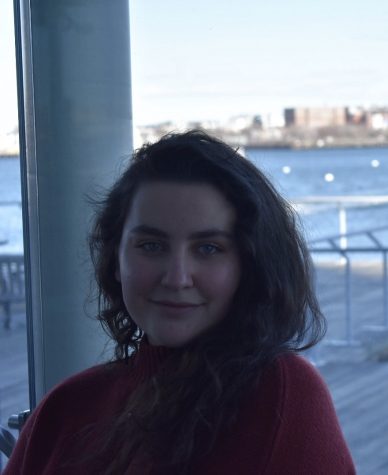
Hi, I’m Grace Poster, a senior at Triton Regional High School. This is my first year on Triton Voice, and so far I greatly enjoy writing about student’s...




